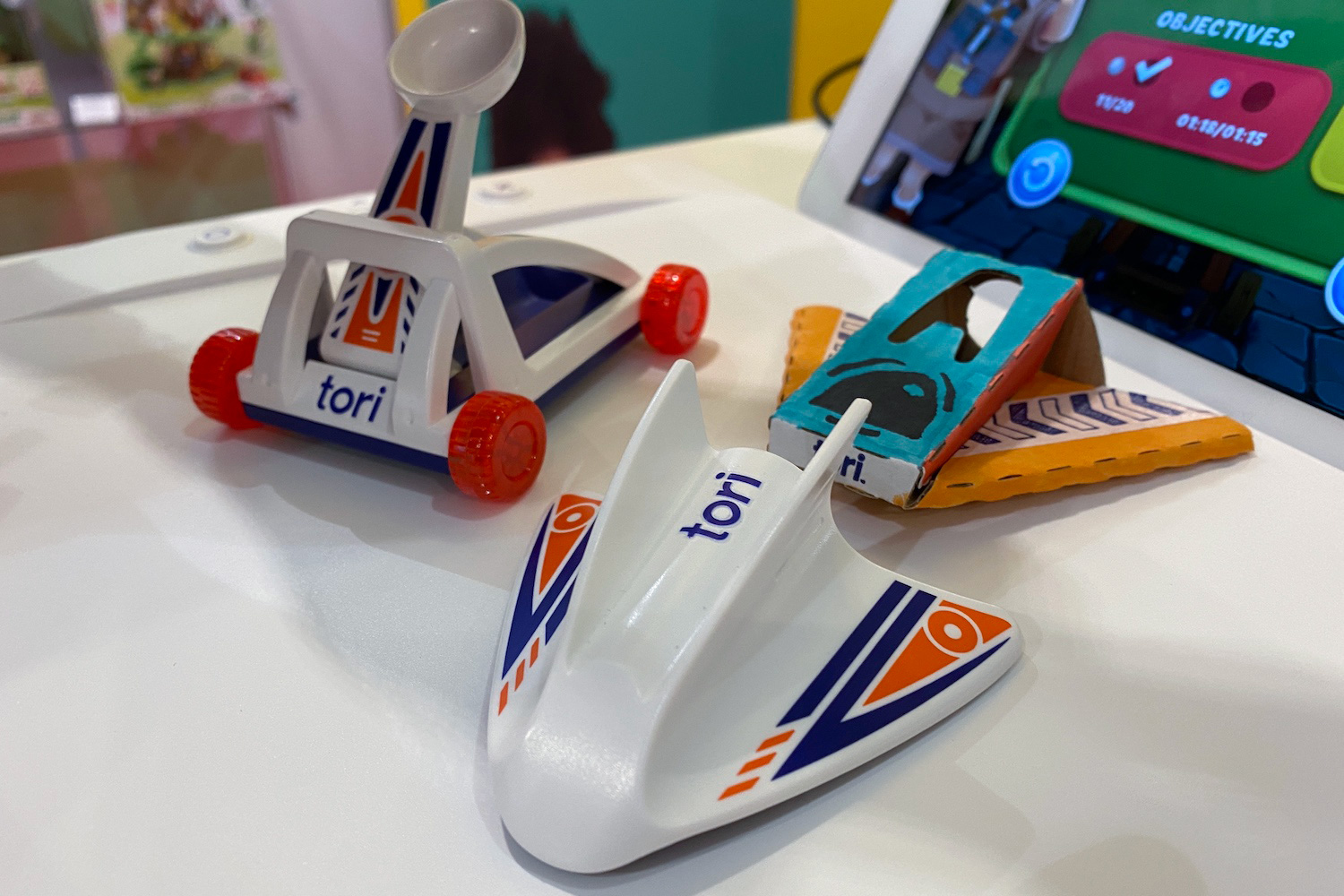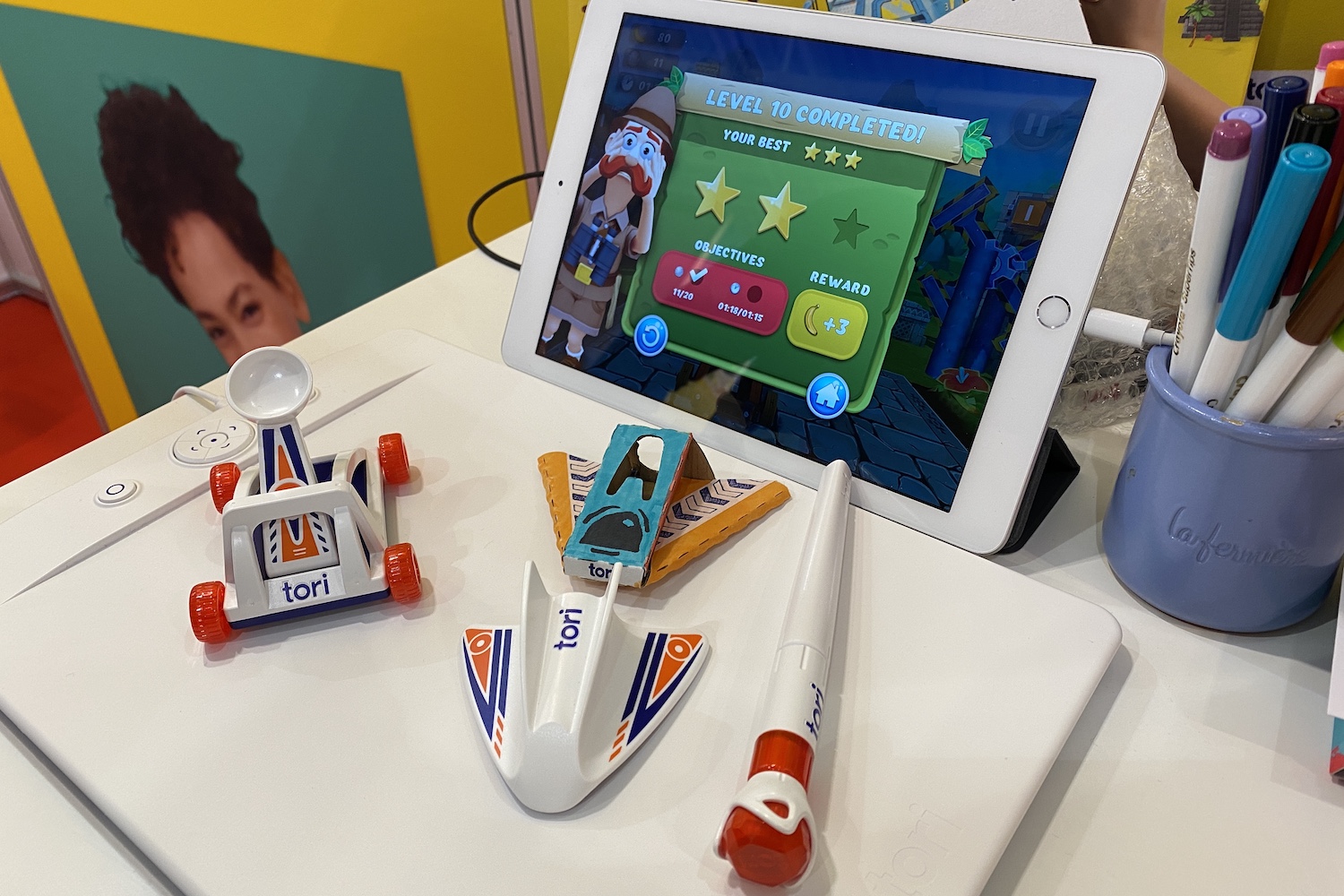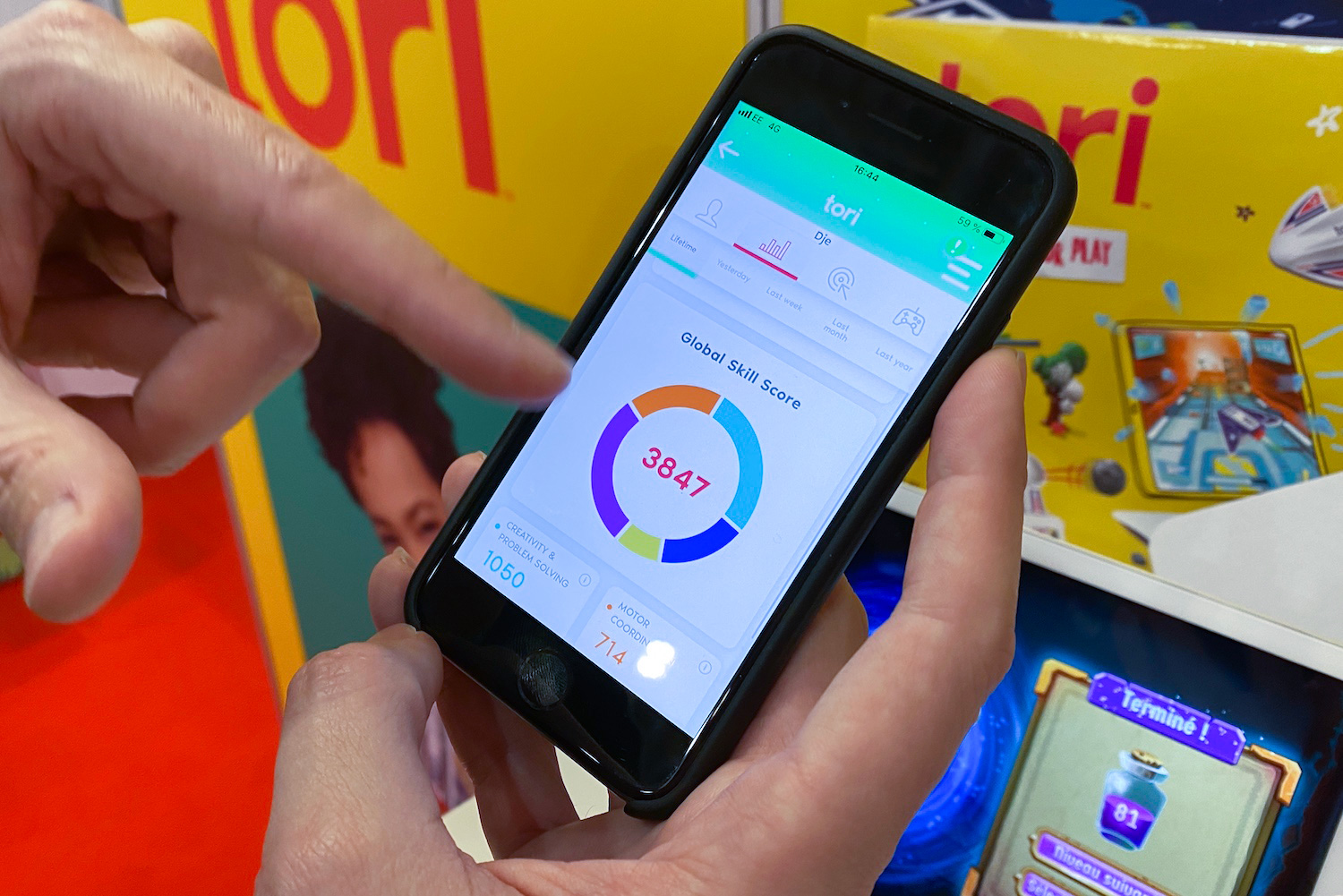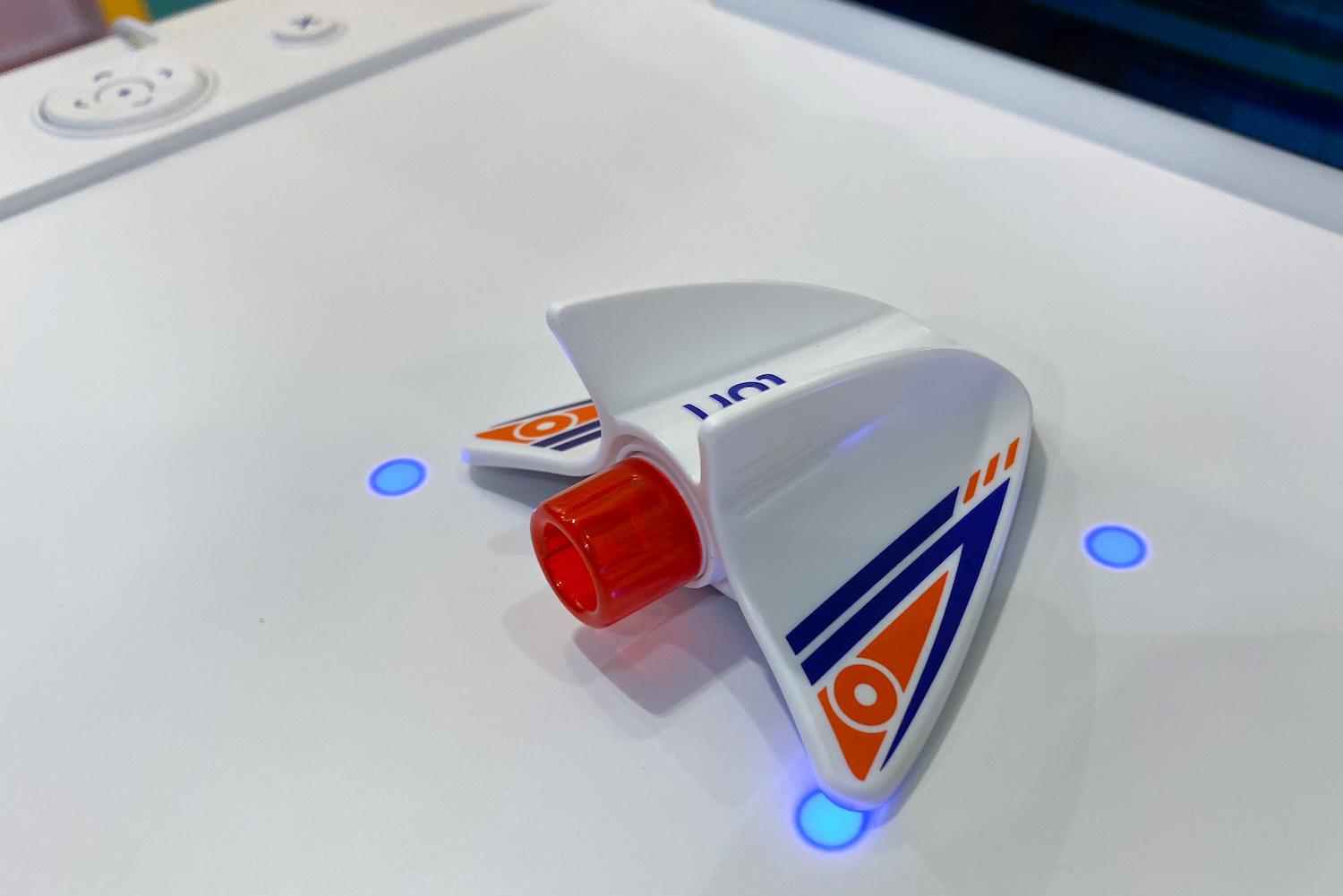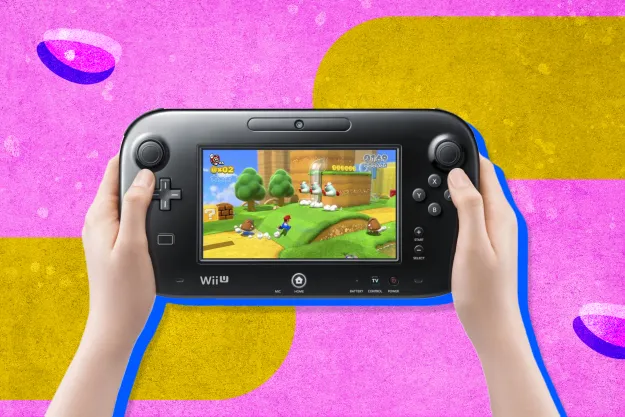You’ve probably played Temple Run, a defining title of the massive endless runner game genre, and know that these games require a lot of swiping this way and that, plus reactions that would put a particularly alert cat to shame. By using some established tech in a new way, Bandai Namco has added another dimension to this established game type, literally.
This is Tori, and it’s a game system that’s aimed at kids, complete with some clever educational elements to ensure it meets the approval of parents. The endless runner game is called Crystal Chase, and is a little like Temple Run crossed with Wipeout, but instead of swiping on the screen to control the spaceship, you move a little toy spaceship around in front of the screen on your phone or tablet, and the movements are mimicked by the game.

You think the game uses the device’s camera, right? I know I did at first, but it doesn’t. Bandai Namco has worked with a company called ISKN to adapt the technology used in its Slate pad for use with the games, and the result is a massive increase in accuracy, a reduction in frustration should the ship move out of range, and a wealth of alternative games to play. What actually happens is ISKN’s Slate uses a series of magnets in its surface to determine the position of the physical spaceship in 3D space.
The result is superb. You move the ship around above the pad, and it’s seemingly instantly transferred onto the screen. Lights flash across the surface as the ship’s position is tracked, and a button on the edge controls the weapons. It’s neat, accurate, and surprisingly precise. While there is some lag, it’s barely noticeable, and perfectly acceptable for the audience the Tori is aimed at. It takes some practice to get used to controlling the game this way, but it soon becomes natural, and best of all, fun. The game is fairly simple, in that you collect crystals and fight enemies, and the crystals can be used to buy in-game upgrades to your ship.
Using the Slate is a big step up from the camera or gyroscopes, which get confused if they lose sight of the ship and ruin play. The magnets in the Slate track a magnet inside the ship, and it doesn’t affect the game if the ship leaves the magnetic field. The little plastic ship is cool, but what’s more interesting is that cardboard templates are included to allow users to make and design their own spaceship model. Build it and put a magnetic cartridge inside the completed version, then scan it into the game using your device’s camera, and it’s ready to be used in the game itself.
The high level of precision is demonstrated in Tori’s other games. A plastic catapult “throws” cannonballs at targets on screen — where the environment can be customised using your own art work, just like the spaceship model — and a plastic wand manipulates 3D objects on screen, with the goal of putting them together to form a single item. Without the precision provided by ISKN’s slate, the potential for frustration is high, and that’s a killer for anything aimed at kids. All the games have educational elements, and parents can use an app to assess progress and even challenge their kids to games, even at different levels of difficulty.
You can buy the Tori Explorer Pack, which comes with the board, spaceship, catapult, wand, various templates to design, and all the games as well for $130 or 110 British pounds. At the moment there are four games available, but at least three more will be out before the end of the year, plus Bandai Namco has a software development kit (SDK) for developers to use as well. The app needed is available for iOS and Android.
Editors' Recommendations
- Nvidia turns simple text prompts into game-ready 3D models
- Baldur’s Gate 3 makes gaming’s most complex genre more player-friendly than ever
- 3D printed cheesecake? Inside the culinary quest to make a Star Trek food replicator
- Nintendo and HAL Laboratory want to make more 3D Kirby games
- AMD’s 3D-stacked Ryzen 7 5800X3D is ‘world’s fastest gaming processor’

